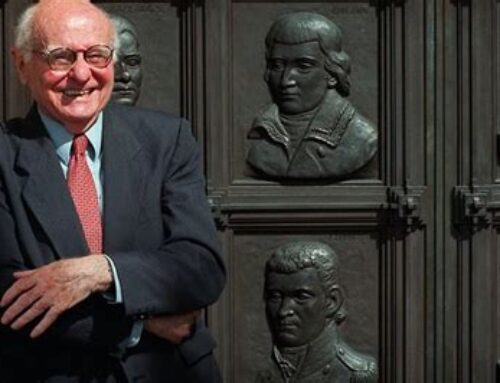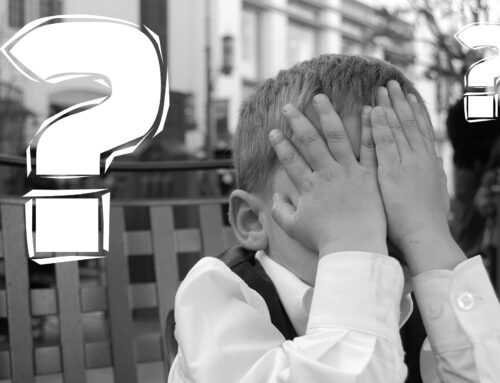Entanglement is the quantum phenomenon that brings us closer to an understanding of the ‘social.’ The concept of entanglement helps us understand the social world is a quantum world.
In his latest book, Helgoland, Italian theoretical physicist Carlo Rovelli describes entanglement as the “strangest of all strange quantum phenomena, the one that takes us furthest away from our old understanding of the world.” At its most basic, entanglement is the observation that two particles, although physically separated, can interact simultaneously – as though they remain ‘connected’ across space and time, or they ‘purposefully’ transmit instantaneous signals. It has been proven, that when physicists alter the state of particle A, the state of distant entangled particle B changes reciprocally and simultaneously.
While I agree entanglement seems ‘strange,’ when considered in the context of our physical reality, I’d like to reappraise Rovelli’s second sentiment. In fact, in this short note, I will hopefully convince you entanglement is the quantum phenomenon that brings us closer to an understanding of our present world – i.e., the world that matters most: the social world. In short, the concept of entanglement helps us understand the social world is a quantum world.
A comprehensive textbook on the subject describes the features of quantum entanglement as: complexity, fragility, monogamy, relationality, and paradoxicality.
Let’s walk through these attributes one by one. First, entanglement has a complex structure. We don’t have a good explanation for how or why two particles seem to be acting upon one another, or in concert. Second, the entanglement of two particles is fragile and can easily be disturbed or broken through contact with the environment. Third, there is a zero-sum quality – a kind of trade-off – to the entanglement between particles. That is to say, if particles A and B are entangled, and particle A subsequently becomes entangled with particle C, the more A becomes entangled with C the less entangled it becomes with B. Fourth, for particles to become entangled they need to have been in contact with each other at some stage. Entanglement requires initial interaction. Finally, the activity displayed within a subsystem of an entangled state can be greater than the total activity of the whole system. For example, when two particles are entangled, the entropy (i.e., the rate of disorder) observed in one specific aspect of the entangled state can be greater than the total entropy observed for the entangled state as a whole. This is an obvious paradox.
Summarising entanglement in Helgoland, Carlo Rovelli writes:
“Entanglement, in sum, is none other than the external perspective on the very relations that weave reality: the manifestation of one object to another, in the course of an interaction, in which the properties of the objects become actual.”
When I consider the features of entanglement and Rovelli’s summary, I am immediately reminded of ‘people,’ ‘inter-personal relationships,’ and ‘society.’ I know, speaking personally, my relationships often fit the textbook features of entanglement. Monogamy: The more time I spend with one person or group of people, the less I am able to spend with others, and these neglected relationships can suffer as a result. Fragility: Changes in the environment certainly affect relationships between people and groups of people. Consider how our inter-personal and social relationships have been affected by the COVID lockdowns and other pandemic response measures. Some of our friends have hidden away and reduced their contact at the very time you would imagine they would seek it the most. Complexity: The influence one person or group of people has on others is extremely complex. The pathways and dynamics, for example, between structural racism and unequal social outcomes are extremely difficult to isolate, track, and quantify at the individual level. Paradoxicality: Social relations are often paradoxical. It is possible to be vocal about progressive social issues, yet unlikely to volunteer. Or, one might be bigoted and closed-minded, yet extremely charitable. Or consider that the discord between siblings can be greater than the total discord in a family as a whole.
German philosopher G. W. F. Hegel believed our identity – our sense of self – is necessarily constructed through our interaction with others. It is worth reflecting on how similar Hegel’s claim that:
“self-consciousness is in and for itself while and as a result of its being in and for itself for an other; i.e., it is only as a recognized being.”
…is to Rovelli’s argument respecting particles:
“in the course of an interaction… the properties of the objects become actual.”
If entanglement shows quantum physicists that ‘reality’ is nothing more than the relations between objects; and, that the attributes of said objects are only manifest through their interaction; and, further, that the relationship between objects is complex, paradoxical, fragile, at times zero-sum and at others positive-sum – it seems quite clear, to me, that the social world is best understood, therefore, as quantum.
So, what does this mean? What is the relevance of taking the social world as a quantum phenomenon?
First and foremost, seeing the social world as a quantum world allows us to understand, analyse, and address it appropriately. Despite protests to the contrary, most social science is embedded with the assumption that social interactions are classical, mechanical, and atomistic. The consequence of these misunderstandings is manifest in our existing analytic tools, approaches, and methodologies – most of which have been designed for a concept of social reality that is primitive and inadequate.
Much social science operates from the naïve belief that social phenomena can be considered discretely; as though a situation or problem can be analysed and understood in isolation from the total system in which it is entangled. Rovelli elaborates the point – made long before by Niels Bohr – that there is no such thing as a ‘separable phenomenon.’ Not at the sub-atomic level, and certainly not in a social setting.
“Whereas previously we thought that the properties of every object could be determined even if we overlooked the interactions occurring between this object and others, quantum physics demonstrates that the interaction is an inseparable part of phenomena. The unambiguous description of any phenomenon requires the inclusion of all the objects involved in the interaction in which the phenomenon manifests itself.”
Perhaps, therefore, the greatest promise of a quantum approach to the social world is a proper appreciation of uncertainty and its unintended consequences.







Leave a Reply